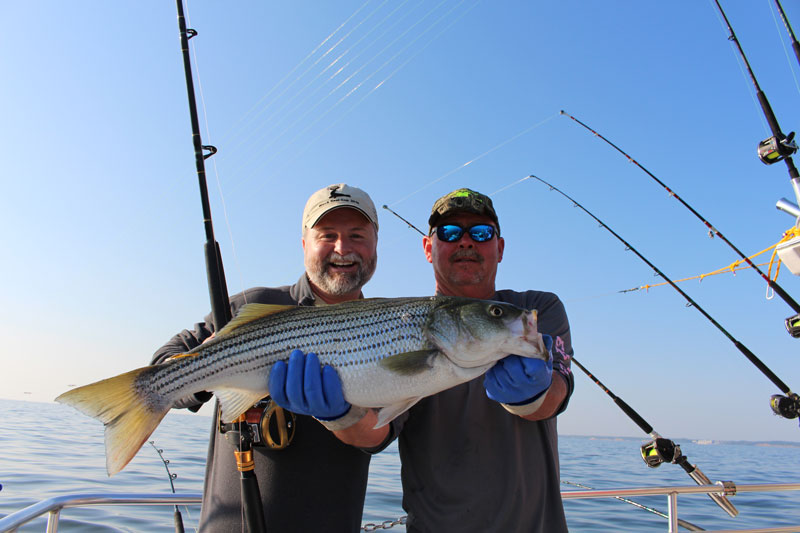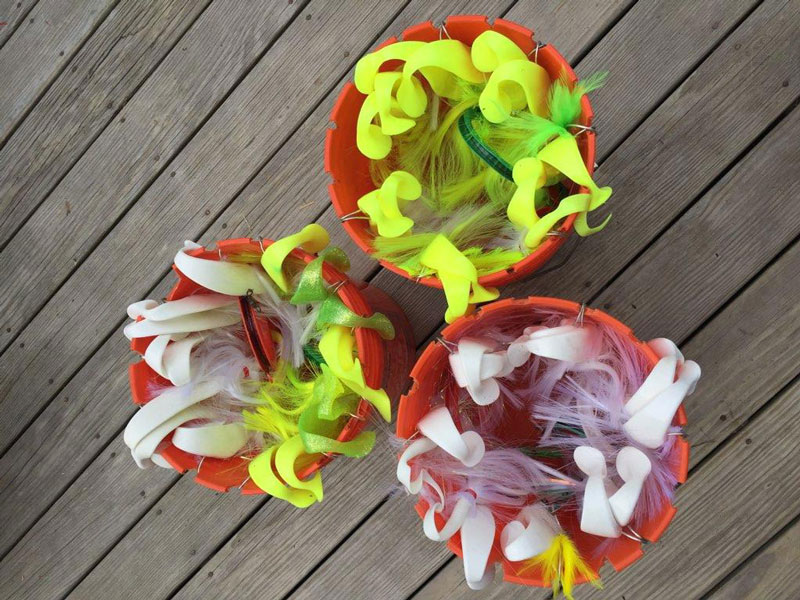Hopefully, you’ve already taken care of the usual wintertime fishing gear maintenance chores. Your line is fresh, your reels are cleaned and lubricated, and your leaders are prepped. But savvy anglers know that you can increase your odds of success next season by going the extra mile. Add these five tricks to your gear prep regime and you’ll boost the chances of success every time you leave the dock.

- Lengthy Debate – Ninety percent of the trollers out there set the length of their lines by making their best guess — and that’s a huge mistake. Boost your catch rate this spring by ending this guesswork today. Measure off 75’, 100’, 125’, and 150’ distances on your reels, and mark the line with vinyl tape or by binding a short piece of colored floss around it. Some anglers prefer to splice in a short length of spectra. Whatever method you choose, the critical thing is just that you do it, so when you deploy those lines you know exactly how far they’re out. The next time you respool, consider using one of the lines that’s color-coded for length. What about “counting bars?” Assuming you’ve taken the time to measure out specific lengths and the corresponding bar-count for your particular gear and line, it’s better than outright guessing. But bar lengths from one reel to the next will vary, even between two identical reel models, if the amount of line on them (and thus spool diameter) varies. When freshly and evenly spooled by a pro they’ll be pretty close at first, but the first time a line snaps above the leader the measurements get out of whack. And if they’re spooled with lines of different diameter the variation can be huge in the first place. So, marking is a much surer bet.
- Squeaky Clean – Take out all your umbrella, tandem, and spreader rigs, and inspect them closely. Does the white look white? Does the chartreuse look chartreuse? Or, does the white look gray and the chartreuse look yellow? During winter layup plastic shad bodies collect dust and grime, and they may look pretty dingy the first time you take them out. Make them look like new with a damp cloth and some warm water, plus a squirt of dish soap. Soak the shad body in the soapy water for a minute or two, then rub it with the cloth. You’ll be amazed at the difference it makes. And if you find lures where the color has faded out with age, replace them entirely. Same goes for any lures with filaments, like bucktails or parachutes, which can get dirty with age and will benefit from a cleaning. To get grime out hold the lure in a bowl of soapy water and run an old comb through the filaments.
- Degrees of Debate – You already know that water temperature plays a huge role in the way the fish will act, but do you know if your temperature gauge is correct in the first place? Many units are shipped from the factory without being calibrated. And over time even calibrated temp gauges will get out of whack. The specific method will vary by MFD manufacturer, so you’ll need to Google up your unit, and find out how to adjust the temperature. Then match it up with what a reliable thermometer tells you while your boat floats in the water at the dock.
- Roller Brawl – If you have rods with one or more roller guides, when’s the last time you disassembled, cleaned, and lubed them? These things need annual attention to work properly, and the chances are great that roller guides are one of the most under-maintained items in your arsenal. After cleaning, lubing, and reassembling them, saw a rubber band across the rollers to make sure they’re spinning freely.
- Take Me to your Leader – Many of us reuse our leaders year after year, which eventually leads to break-offs. Take out each and every leader that’s seen action and run your fingers down it, feeling for chaff or nicks. Also cut off all the old knots (which tend to weaken with age) and tie new ones. And if any leader is more than two seasons old, replace it.

Speaking of replacing things: if your mainlines are monofilament and they’re more than three seasons old, they need to go, too. Remember, monofilament is degraded by UV light and it has a limited lifespan whether you use it or not. If it’s been sitting on those reels year after year there’s a good chance your 30 pound test is now actually 20 pound test. Braid lasts a heck of a lot longer, although it can get weakened by abrasion. Most abrasion takes place near the end of the line so it’s a good idea to chop off and discard the last 10 or 15 feet of line on every rig, every season. Then shine a bright flashlight on the next 10 or 20 feet of line and look for bunches of little frays or hairs hanging off. If you see any, lop off that section of line, too.
Okay: now are you ready to get out there and troll, troll, troll your boat? We certainly hope so. And we hope that after you get busy with these trolling tackle chores, you’ll enjoy bent rods and full coolers all season long.
BONUS TIP: If you hope to land a true monster, stop hand-setting your drags and start scale-setting them. Most anglers shoot for between 25- and 30-percent of the mainline rated breaking strength. After using a scale to set your drags, try pulling them by hand. You’ll likely be surprised at just how light — or just how tight — you’ve been setting them all along.